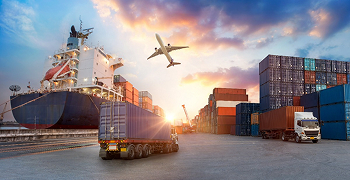
Cross-border compliance and the Australian ecommerce market
Australia is experiencing growth in more ways than one — in its population, its number of domestic retailers expanding overseas, and the number of international retailers selling into the country.
The Avalara-commissioned RetailX Australia 360° 2023 report gives you insight, data, and analysis that can help you understand the market and Australian shoppers’ buying behaviours. You can also learn lessons from Australia’s top-performing retailers.
Some key findings of the report include:
- Ecommerce spending has grown in recent years, with revenues more than double what they were in 2019
- Online sales have grown strongly, from AUD $1.3bn on non-food products in July 2019 to AUD $2.5bn in July 2023, representing a shift online in the Australian economy
- Food spending is also shifting online, having grown from 2.7% in July 2019 to 5.9% in July 2023
- Fashion is the most-shopped online category, with sales worth an estimated AUD $12.2bn in 2023
- Electronics ($9.7bn) and beauty, health, and personal care ($6.3bn) are the next-largest online categories.
It seems that now is a good time for retail businesses to set their eyes on the Australian market. With a free trade agreement in place between the U.K. and Australia that aims to simplify how customers and businesses in both nations can buy and sell from each other, it’s a great time for both British and Australian retailers in particular to expand beyond their domestic borders.
Takeaways of the report: What Australian online shoppers expect
Sustainability — Australians have a history of experiencing the devastating impact of environmental issues. No surprises, then, that ConsumerX research cited within the report finds that 75% of Australians surveyed want retailers to be ecologically sustainable. 50% also say environmentally friendly packaging is important, putting it ahead of next- or same-day delivery.
Delivery remains important — Despite sustainability being top priority, 89% of Australian shoppers say speedy delivery is either very or somewhat important, with 53% saying the same for same-day delivery.
Mobile shopping — Almost 90% of Australians surveyed about their shopping habits shopped online, with smartphones being the most popular channel for online purchases — 63% said they used their phones to make purchases all or most of the time.
Learn from how the Top100 retailers operate
To round off the report, RetailX lists the Top100 retailers in Australia for 2023. The findings can help you understand how they manage their operations in Australia and appeal to the nation’s consumers in areas ranging from delivery to sustainability.
Marketplaces account for 55% of the top retail businesses that sell to the Australian market (including Amazon and eBay), and win a larger share (65%) of traffic than retailers (21%) or brands (14%).
Businesses based outside the market (68%) together win more visits from Australian customers than those based within (32%). The U.S. (19%) is the largest single source of international visits to Australian members of the Top100.
The most popular retailers tend to offer repair schemes (particularly in the fashion sector) to help products last longer. Sustainable practices such as this, as well as offering biodegradable or recyclable packaging, would be well received by Australian shoppers.
Somewhat surprisingly, the report finds that less than a third of the leading retail businesses selling to the market offer premium delivery services such as next-day (29%) or same-day (15%) delivery. Given its importance to buyers, faster-than-the-competition delivery is likely to prove popular.
So how should retailers enter the Australian market, or improve their standing within it?
Evidently, by committing to sustainability, striving for superfast delivery, and offering optimal mobile-first shopping experiences. Sure, this is advice that’s much easier to type than put into practice. But retailers might not realise that with the right automation software to help you manage your cross-border compliance, you’re halfway there.
Using automation to accurately assign Harmonised System (HS) codes (six-digit identifiers assigned to every product sold across international borders) to products can help reduce customs delays and expedite delivery. If sellers assign incorrect codes, which can easily happen when attempting to do so manually, the goods will likely undergo additional checks, and extra charges can be applied. The customer may even be responsible for paying extra costs to release their purchase from customs, or authorities may bar the goods from entry completely. But with the correct duties calculated and paid, these risks are greatly reduced. The customer will get their goods as quickly as possible, and could put sellers ahead of their competition.
The same technology can flag items that certain markets restrict or ban altogether, so you can adjust your inventory accordingly and avoid return shipping and the environmental impact associated with it (as well as costs). Because the software is cloud-based and can integrate into the systems you already use, you can implement it across all of your sites and platforms so mobile shoppers will enjoy the same optimal buying experience.
In addition, automation can provide overseas buyers with more accurate checkout prices by calculating international tax rates (which can be a particular challenge when entering new markets), serving to reduce cart abandonment.
Avalara cloud-based solutions can help businesses of all types and sizes simplify their cross-border compliance. With the complex and time-consuming — but essential — compliance tasks in hand, you can shift your focus to the more exciting parts of your business like growing into new markets and wowing new customers.

The Avalara Tax Changes midyear update is here
Trusted by professionals, this valuable resource simplifies complex topics with clarity and insight.
Stay up to date
Sign up for our free newsletter and stay up to date with the latest tax news.



